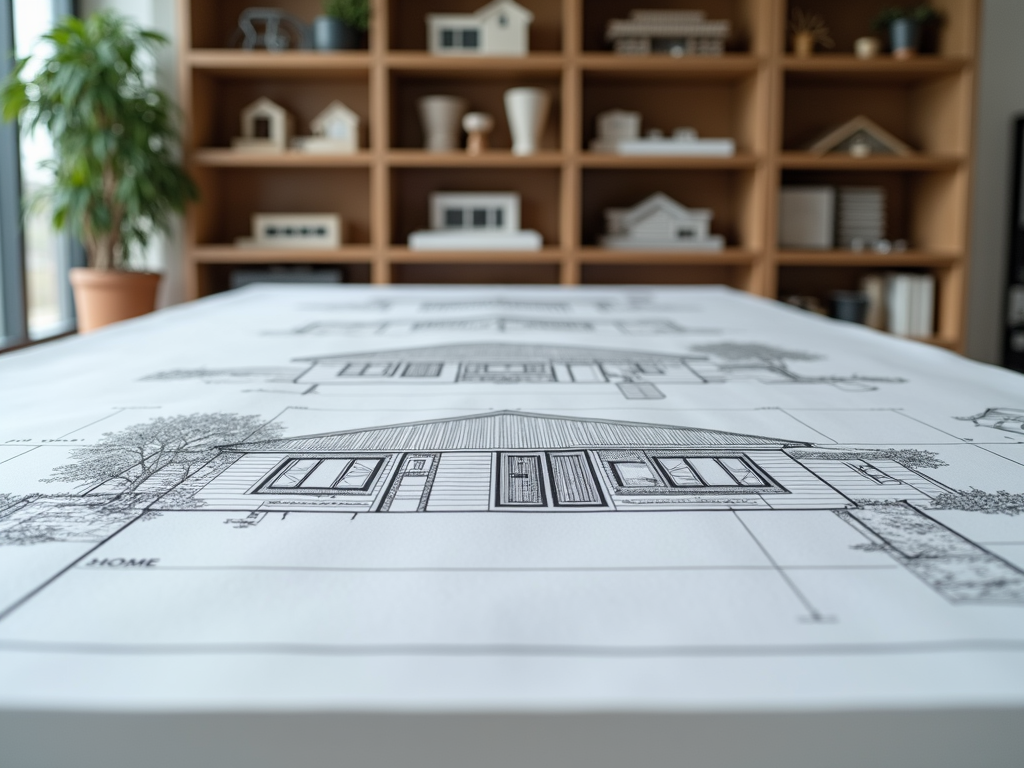Building a home is exciting, but it’s also a big project. It’s not just about picking a design and waiting for construction to finish. There are a lot of decisions to make, and if you don’t plan things right, it can get stressful quickly.
Whether you’re starting from scratch or already have ideas in mind, here’s how to plan your dream home the smart way.
Find the Right Location
Before you start designing your home, you need a place to build it. The land you choose can affect everything – what kind of house you can build, how much it will cost, and even how comfortable it will be to live there.
Think about what’s important to you. Do you want to be close to work or school? Do you need a big yard? Is the neighborhood safe? You also need to check if the land is ready for construction. Some lots don’t have access to water, electricity, or sewage, which can add extra costs.
It’s also a good idea to look into local zoning laws. Some areas have rules about how big houses can be, how close they can be to neighbors, or even what materials you can use.
Work With a Design-Build Firm
Once you have the land, it’s time to design your home. You could hire an architect and then find a builder separately, but that takes more time and effort. A better option is to work with home design build firms minneapolis that handle both the design and construction. This makes the process easier because everything is done under one team.
A design-build firm works with you to create a custom plan that fits your needs, budget, and land. They help you decide on layouts, materials, and finishes while making sure everything stays on track. This way, you won’t have to juggle different contractors and hope they all communicate properly.
Create a Realistic Budget
A lot of people make the mistake of only budgeting for the house itself. But there are plenty of other costs to consider, like:
- Permits and inspections – Every home needs approval from the city before and during construction.
- Utility hookups – Connecting water, gas, and electricity can cost thousands.
- Landscaping – Many people forget about the cost of driveways, fences, and lawns.
- Furniture and appliances – A brand-new home won’t feel complete without them.
It’s also a good idea to set aside extra money for unexpected costs. Sometimes, bad weather or supply delays can make the project take longer, which means higher costs. A good rule is to save at least 10-15% of your budget for surprises.
Choose a Layout That Works for You
It’s easy to get caught up in fancy home designs, but what really matters is how the space works for you and your family.
Think about your daily routine. Do you need a big kitchen because you cook a lot? Do you want an open floor plan, or do you prefer separate rooms for privacy? How many bathrooms will make life easier?
Also, think long-term. If you plan to stay in your home for many years, consider things like extra storage, energy-efficient features, or space that can be used in different ways as your needs change.
Pick Quality Materials
When choosing materials, it’s tempting to go with the cheapest options to save money. But cheap materials often don’t last long and can cost more in repairs later.
Invest in things that matter, like durable flooring, strong roofing, and energy-efficient windows. These will help your home last longer and save money on maintenance. If you’re not sure what’s worth the extra cost, ask your builder for advice.
Think About Energy Efficiency
A home that’s energy-efficient isn’t just good for the environment–it also saves you money on utility bills.
Some smart choices include:
- Good insulation – Keeps your home warm in winter and cool in summer.
- Energy-efficient windows – Prevents heat from escaping in cold months and keeps it out in hot months.
- Solar panels – Reduces electricity costs over time.
- LED lighting – Uses less energy and lasts longer than regular bulbs.
Even small changes, like using smart thermostats or installing ceiling fans, can make a big difference in keeping energy costs down.
Plan for Storage
One of the biggest regrets people have after building a home is not including enough storage. It’s something that’s easy to overlook but makes a huge difference once you move in.
Some good ideas include:
- Built-in shelves to save space
- Walk-in closets for bedrooms
- A pantry for kitchen storage
- A mudroom for shoes and coats
- Overhead storage in the garage
It’s always better to have extra storage than to realize later that you don’t have enough.
Stay Involved During Construction
Even if you hire a great builder, you should still check in on the project regularly. Mistakes can happen, and it’s easier to fix them early rather than after everything is finished.
Visit the site often to make sure everything looks right. If something seems off, ask questions. Builders usually appreciate homeowners who stay involved and communicate clearly.
Final Walkthrough and Small Details
Before moving in, do a final walkthrough with your builder. Check every room to make sure everything is finished properly. Look at doors, windows, flooring, and even small details like outlets and light switches. If anything needs fixing, it’s better to address it before you move in.
Once everything is ready, it’s time to enjoy your new home!
Making the Home Building Process Easy
Building a home doesn’t have to be stressful. With the right planning, a good team, and smart decisions, you can create a home that fits your needs perfectly.
Find the right location, work with a design-build firm, set a budget, and choose materials that last. Keep energy efficiency in mind, plan for enough storage, and stay involved during construction. These steps will help you avoid common mistakes and make the whole process much smoother.
By thinking ahead and making smart choices, you’ll end up with a home that’s not only beautiful but also
built to last.

